Home>Furniture & Design>Interior Design Trends>How To Learn Stained Glass
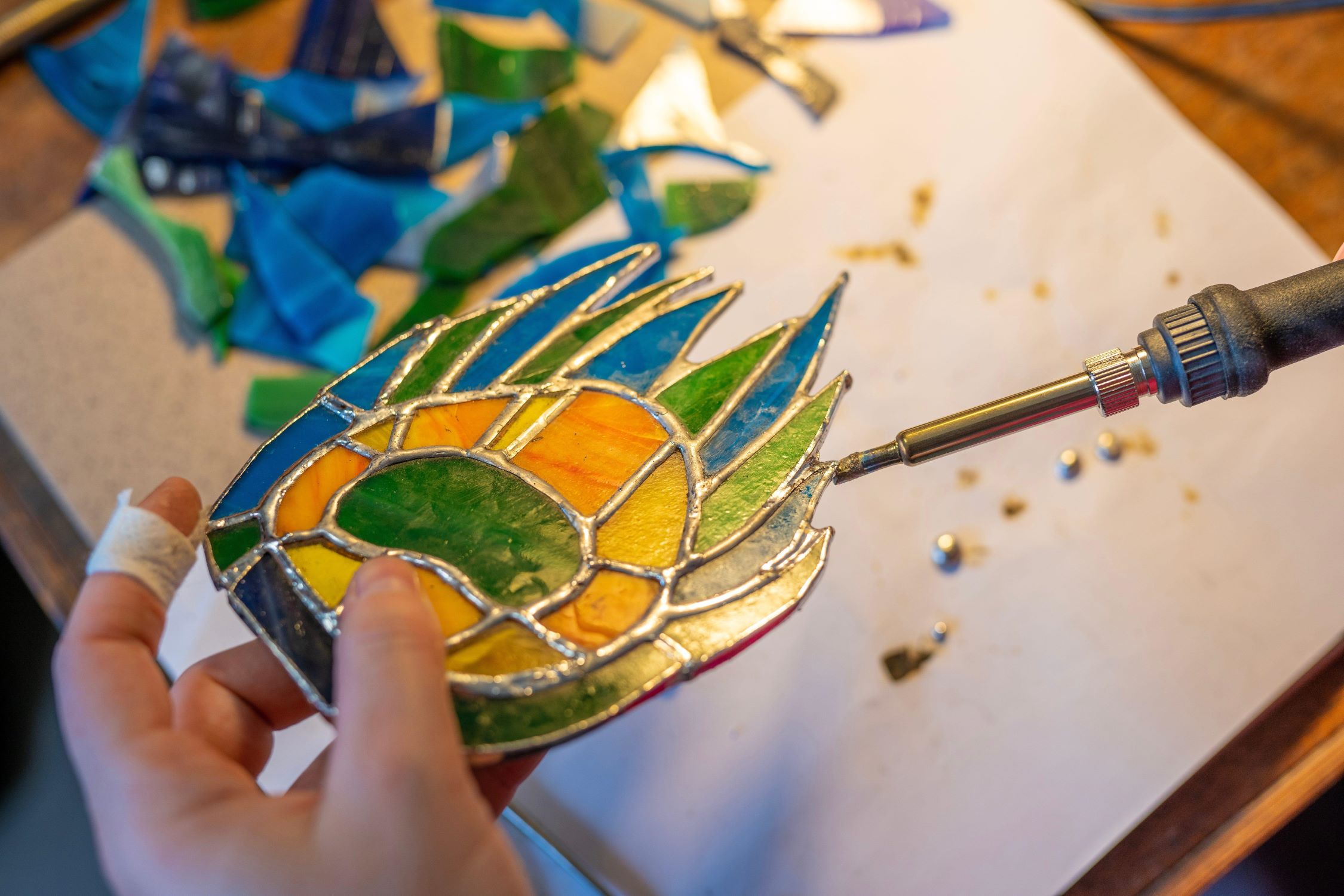

Interior Design Trends
How To Learn Stained Glass
Modified: February 18, 2024
Discover the latest interior design trends and learn how to incorporate stained glass into your home decor. Explore techniques and ideas for creating stunning stained glass pieces.
(Many of the links in this article redirect to a specific reviewed product. Your purchase of these products through affiliate links helps to generate commission for Storables.com, at no extra cost. Learn more)
Introduction
Stained glass art has a rich history dating back to ancient times, with its mesmerizing beauty adorning churches, cathedrals, and palaces around the world. The allure of stained glass lies in its ability to transform light into a breathtaking display of color and form, creating an enchanting ambiance that captivates the beholder. Whether you are an aspiring artist or a creative enthusiast, learning the art of stained glass opens the door to a world of boundless creativity and self-expression.
The process of creating stained glass art is a harmonious blend of craftsmanship and artistic vision. It involves the meticulous assembly of colored glass pieces using lead came or copper foil, resulting in intricate designs that come to life when illuminated by natural or artificial light. From delicate floral motifs to elaborate geometric patterns, the possibilities in stained glass art are as limitless as the imagination.
Embarking on a journey to learn stained glass is a rewarding endeavor that offers a unique opportunity to delve into a time-honored craft while nurturing your artistic sensibilities. Whether you are drawn to the meditative nature of working with glass or the prospect of bringing your creative visions to life, the art of stained glass beckons with its timeless allure.
In this comprehensive guide, we will delve into the fascinating world of stained glass art, equipping you with the knowledge and skills needed to embark on your own stained glass odyssey. From understanding the essential tools and materials to mastering fundamental and advanced techniques, this guide will serve as your compass, guiding you through the intricate and captivating realm of stained glass artistry.
As we journey through the intricacies of stained glass creation, you will gain insights into troubleshooting common challenges and discover the nuances of finishing and displaying your exquisite stained glass artworks. By the end of this guide, you will be well-prepared to embark on your stained glass adventure, armed with the expertise and inspiration to bring your artistic aspirations to fruition.
Join us as we unravel the enchanting world of stained glass art and embark on a transformative journey that celebrates creativity, craftsmanship, and the timeless allure of light and color.
Key Takeaways:
- Stained glass art is a captivating journey of creativity and craftsmanship, from learning the basics to mastering advanced techniques. Troubleshooting common problems and presenting artworks with care ensures their enduring allure.
- Choosing the right tools and materials is crucial for creating stunning stained glass artworks. Embracing the interplay of light and color, and showcasing the finished pieces, invites beholders to immerse themselves in a world of captivating beauty.
Read more: How To Learn Glass Blowing
Getting Started with Stained Glass
Embarking on a journey into the realm of stained glass artistry is an exhilarating endeavor that invites you to explore the captivating fusion of color, light, and craftsmanship. As you take your first steps into this enchanting world, it is essential to lay a solid foundation that will serve as the cornerstone of your stained glass odyssey.
The initial phase of your stained glass journey involves familiarizing yourself with the fundamental aspects of this timeless art form. Begin by immersing yourself in the rich history of stained glass, tracing its origins and evolution through the annals of time. Understanding the historical significance and cultural resonance of stained glass will deepen your appreciation for this revered art form and provide valuable insights into its enduring allure.
Next, acquaint yourself with the essential tools and materials that form the backbone of stained glass creation. From glass cutters and grozing pliers to soldering irons and flux, assembling a comprehensive array of tools will empower you to embark on your creative endeavors with confidence. Additionally, familiarize yourself with the diverse types of glass available, ranging from opalescent and cathedral to iridescent and textured varieties, each offering unique visual and textural qualities.
As you delve into the world of stained glass, consider seeking guidance from seasoned artisans and reputable educational resources. Enrolling in workshops, classes, or online tutorials can provide invaluable hands-on experience and expert instruction, allowing you to gain practical skills and insights from experienced practitioners. Furthermore, immersing yourself in the vibrant community of stained glass enthusiasts and artists can foster a supportive network that nurtures your growth and passion for this captivating art form.
In addition to honing your technical skills, cultivating a discerning eye for design and composition is paramount in the realm of stained glass artistry. Explore the diverse styles and motifs prevalent in stained glass, from traditional floral and geometric patterns to contemporary abstract designs, allowing your creative instincts to flourish as you draw inspiration from the rich tapestry of stained glass aesthetics.
As you embark on your journey into the world of stained glass, approach this endeavor with an open heart and a curious mind, embracing the boundless possibilities that await. With a steadfast commitment to learning, a spirit of creative exploration, and a reverence for the timeless art of stained glass, you are poised to embark on a transformative odyssey that celebrates the harmonious interplay of light, color, and craftsmanship.
Choosing the Right Tools and Materials
Selecting the appropriate tools and materials is a pivotal step in the journey of mastering the art of stained glass. Equipping yourself with the essential implements and quality glass is fundamental to ensuring the successful execution of your creative vision.
Essential Tools
-
Glass Cutter: A high-quality glass cutter is indispensable for scoring and breaking glass with precision. Look for a cutter with a carbide wheel for durability and smooth cutting.
-
Soldering Iron: An adjustable temperature soldering iron with a fine tip is essential for joining glass pieces with solder. Opt for a reliable soldering iron that offers precise control over the soldering process.
-
Grozing Pliers: These specialized pliers are designed for nibbling and shaping glass edges, allowing for precise adjustments to achieve a perfect fit.
-
Glass Grinder: A grinder equipped with diamond bits is invaluable for refining the edges of glass pieces, ensuring a seamless fit during assembly.
-
Foiling Tools: Copper foil and a fid tool for burnishing are essential for wrapping glass pieces with precision and creating a secure surface for soldering.
-
Flux and Solder: High-quality flux and lead-free solder are vital for creating strong and clean solder joints, ensuring the structural integrity of your stained glass artwork.
Diverse Glass Selection
-
Opalescent Glass: This type of glass features milky, translucent qualities and is ideal for adding depth and dimension to your designs.
-
Cathedral Glass: Known for its transparent and uniform appearance, cathedral glass is a popular choice for creating vibrant and luminous elements within stained glass compositions.
-
Iridescent Glass: With its captivating play of colors and reflective properties, iridescent glass adds a mesmerizing allure to stained glass artworks, infusing them with a dynamic visual impact.
-
Textured Glass: Textured glass varieties offer a diverse range of surface patterns, from subtle ripples to intricate textures, adding tactile and visual interest to your creations.
-
Streaky Glass: Characterized by swirling and variegated patterns, streaky glass lends a dynamic and organic aesthetic to stained glass designs, evoking a sense of movement and fluidity.
By meticulously selecting the right tools and a diverse array of glass, you lay the groundwork for bringing your artistic visions to life with precision and finesse. With a discerning eye for quality and a commitment to craftsmanship, your journey into the world of stained glass artistry is poised to unfold with boundless creativity and expressive potential.
Read more: How To Stain A Glass
Learning Basic Stained Glass Techniques
Mastering basic stained glass techniques forms the cornerstone of your journey into the captivating realm of glass artistry. These fundamental skills lay the groundwork for creating exquisite stained glass compositions, allowing you to bring your creative visions to life with precision and artistry.
Cutting and Shaping Glass
The art of cutting and shaping glass is a fundamental skill that underpins stained glass craftsmanship. Begin by scoring the glass using a high-quality glass cutter, ensuring smooth and precise lines. With practiced finesse, gently break the scored glass along the cut line, yielding clean and accurate pieces. Utilize grozing pliers to refine the edges, ensuring a perfect fit for assembly.
Foiling and Soldering
Wrapping glass pieces with copper foil is a pivotal step in preparing them for soldering. Carefully apply the foil to the edges of the glass, ensuring a snug and uniform fit. With a fid tool, burnish the foil to secure it firmly to the glass surface, creating a seamless foundation for soldering. Employing a soldering iron, skillfully join the foiled glass pieces with lead-free solder, creating strong and clean solder joints that form the structural framework of your stained glass artwork.
Assembly and Design Execution
Assembling the foiled glass pieces into a cohesive design requires meticulous attention to detail and a discerning eye for composition. Lay out the glass elements according to your design, ensuring precise alignment and spacing. With finesse and precision, solder the assembled pieces together, creating a unified and visually captivating stained glass composition. Embrace the opportunity to experiment with diverse design layouts and motifs, allowing your creative instincts to flourish as you bring your artistic vision to fruition.
Read more: How To Hang Stained Glass
Patina and Cleaning
Applying a patina to the soldered joints enhances the visual impact of your stained glass artwork, imbuing it with a professional finish. Choose a patina that complements the overall aesthetic of your composition, applying it with care to achieve a uniform and lustrous appearance. Following the patina application, meticulously clean the stained glass artwork, ensuring that it radiates with brilliance and clarity, ready to enchant and captivate the beholder.
By mastering these basic stained glass techniques, you lay a solid foundation for your artistic journey, equipping yourself with the essential skills to embark on a transformative odyssey of creativity and craftsmanship. With dedication, practice, and a spirit of creative exploration, you are poised to unlock the boundless potential of stained glass artistry, infusing your creations with beauty, elegance, and timeless allure.
Exploring Advanced Stained Glass Techniques
Delving into advanced stained glass techniques opens a realm of boundless creative possibilities, allowing artisans to elevate their craftsmanship and imbue their creations with unparalleled artistry. As practitioners progress in their stained glass journey, they encounter a rich tapestry of advanced techniques that enrich their artistic repertoire and empower them to manifest intricate and awe-inspiring designs.
Incorporating Glass Painting and Staining
The art of glass painting and staining introduces a captivating dimension to stained glass compositions, enabling artists to infuse their creations with intricate details and vibrant hues. By employing specialized glass paints and stains, artisans can embellish their glass pieces with delicate brushwork, intricate patterns, and nuanced shading, adding depth and visual complexity to their designs. Whether evoking the ethereal beauty of nature or capturing the essence of historical motifs, glass painting and staining offer a versatile and expressive avenue for elevating stained glass artworks to new heights of artistic excellence.
Implementing Complex Glass Cutting Techniques
Advanced glass cutting techniques, such as intricate curves, beveling, and faceting, bestow a sense of sophistication and refinement upon stained glass compositions. Mastery of these techniques empowers artisans to transcend traditional geometric forms, introducing fluidity, dimensionality, and dynamic visual effects into their designs. By skillfully manipulating glass through precise cutting and shaping, artists can imbue their creations with a sense of movement, luminosity, and intricate detail, elevating their stained glass artworks to the pinnacle of artistic expression.
Read more: How Is Stained Glass Made
Embracing Three-Dimensional Construction
The exploration of three-dimensional construction techniques propels stained glass artistry into the realm of sculptural elegance and spatial dynamism. By incorporating advanced methods such as glass layering, solder sculpting, and structural reinforcement, artisans can transcend the two-dimensional constraints of traditional stained glass, creating captivating sculptural forms that interact with light and space in mesmerizing ways. This innovative approach to stained glass artistry invites practitioners to craft immersive and tactile compositions that engage the senses and evoke a profound aesthetic experience.
Fusing and Kiln-Forming Techniques
The fusion of glass through kiln-forming techniques introduces a captivating fusion of art and science, allowing artisans to create intricate glass elements with remarkable depth and texture. By harnessing the transformative power of heat and gravity, practitioners can craft fused glass components that seamlessly integrate into their stained glass compositions, adding a layer of visual intrigue and tactile allure. Through the mastery of kiln-forming techniques, artists can infuse their creations with a sense of organic fluidity, luminous translucency, and captivating textural interplay, elevating their stained glass artworks to a realm of unparalleled sophistication.
Pushing the Boundaries of Creativity
As artisans venture into the realm of advanced stained glass techniques, they are emboldened to push the boundaries of creativity, innovation, and artistic expression. By embracing a spirit of experimentation, curiosity, and technical mastery, practitioners can transcend conventional norms, unlocking the potential for groundbreaking designs that captivate the imagination and redefine the possibilities of stained glass artistry. Through the exploration of advanced techniques, artisans embark on a transformative odyssey of creative exploration, infusing their stained glass creations with a sense of wonder, ingenuity, and timeless allure.
In the pursuit of mastering advanced stained glass techniques, artisans embark on a journey of artistic evolution, honing their skills, expanding their creative horizons, and embracing the boundless potential of stained glass artistry. With a steadfast commitment to excellence, a spirit of creative exploration, and a reverence for the timeless art of stained glass, practitioners are poised to unlock the transformative power of advanced techniques, infusing their creations with beauty, elegance, and enduring artistic resonance.
Troubleshooting Common Stained Glass Problems
Creating stained glass artworks is a captivating and rewarding endeavor, but it is not without its challenges. As artisans embark on their journey of glass artistry, they may encounter common issues that require adept troubleshooting to ensure the successful realization of their creative vision. Understanding and addressing these challenges is essential for maintaining the integrity and quality of stained glass compositions.
Read more: How To Solder Stained Glass
Cracked or Broken Glass Pieces
One of the most prevalent issues in stained glass creation is the occurrence of cracked or broken glass pieces during cutting or assembly. This can result from excessive pressure during cutting, mishandling of delicate glass, or structural stress during soldering. To address this, artisans should exercise caution and precision during the cutting process, ensuring that the glass cutter scores the surface without undue force. Additionally, handling glass pieces with care and providing adequate support during assembly can mitigate the risk of breakage.
Inconsistent Solder Joints
Inconsistent solder joints can detract from the visual cohesion and structural integrity of stained glass artworks. This issue may arise from insufficient flux application, improper soldering technique, or inadequate cleaning of the soldering iron tip. Artisans should meticulously apply flux to all foiled surfaces, ensuring thorough coverage for optimal solder adhesion. Employing a steady and controlled soldering technique, along with regular cleaning and tinning of the soldering iron tip, is crucial for achieving uniform and durable solder joints.
Foil Lifting or Peeling
Foil lifting or peeling can compromise the stability and aesthetic appeal of stained glass compositions. This issue often stems from inadequate foiling techniques, such as insufficient burnishing or improper foil application. Artisans should meticulously adhere the foil to the glass edges, ensuring a snug and uniform fit. Employing a fid tool for thorough burnishing of the foil promotes secure adhesion, preventing the risk of lifting or peeling during the soldering process.
Patina Discoloration or Uneven Application
The application of patina is a pivotal step in enhancing the visual impact of stained glass artworks, but issues such as discoloration or uneven application can detract from the overall finish. This may result from inadequate surface preparation, improper patina application, or insufficient cleaning of the glass. Artisans should meticulously clean and degrease the soldered joints before applying patina, ensuring a pristine surface for optimal adhesion. Employing a methodical and uniform application of patina, followed by thorough cleaning and polishing, is essential for achieving a lustrous and consistent finish.
By adeptly troubleshooting these common stained glass problems, artisans can uphold the quality and integrity of their creations, ensuring that their artworks radiate with beauty, craftsmanship, and enduring allure. Through a combination of precision, care, and technical expertise, practitioners can navigate and overcome these challenges, fostering a transformative journey of creative exploration and mastery in the timeless art of stained glass.
Read more: How To Create Stained Glass
Finishing and Displaying Your Stained Glass Artworks
After investing time, skill, and creativity into the creation of stunning stained glass artworks, the process of finishing and displaying these masterpieces is a pivotal step in bringing them to life. The meticulous attention to detail and thoughtful presentation of stained glass compositions contribute to their visual impact and enduring allure.
Cleaning and Polishing
Before unveiling the splendor of stained glass artworks, it is essential to meticulously clean and polish the surfaces to ensure they radiate with brilliance and clarity. Carefully removing any residual flux, patina, or debris from the glass surfaces enhances their luminosity and visual appeal. Employing gentle cleaning agents and soft, lint-free cloths, artisans delicately polish the glass, unveiling its inherent beauty and captivating radiance.
Framing and Mounting
The selection of an appropriate frame or mounting method plays a pivotal role in accentuating the aesthetic impact of stained glass artworks. Artisans carefully consider the framing options, choosing a style and finish that harmonizes with the composition while providing structural support and visual enhancement. Whether opting for traditional wooden frames, sleek metal mounts, or innovative display solutions, the framing and mounting process elevates the presentation of stained glass artworks, framing them as captivating focal points within their intended spaces.
Lighting and Ambiance
Harnessing the transformative power of light is integral to showcasing the enchanting allure of stained glass compositions. Artisans strategically position their artworks to interact with natural or artificial light, allowing the interplay of illumination to accentuate the vibrant colors and intricate details within the glass. Thoughtful consideration of ambient lighting and its interplay with stained glass artworks creates an immersive visual experience, inviting beholders to immerse themselves in the captivating interplay of color, light, and form.
Read more: How To Start Stained Glass
Exhibition and Appreciation
The culmination of the finishing and displaying process unfolds as stained glass artworks are unveiled for exhibition and appreciation. Whether showcased in private residences, public spaces, or galleries, the presentation of these masterpieces invites admiration and contemplation. Artisans revel in the opportunity to share their creations with the world, inviting beholders to engage with the timeless allure of stained glass, fostering a profound appreciation for the craftsmanship, artistry, and transformative beauty encapsulated within each composition.
Legacy and Enduring Beauty
As stained glass artworks are unveiled and admired, they transcend the confines of time, becoming enduring testaments to the artistry and creativity of their creators. Each composition carries with it a legacy of craftsmanship and a narrative of inspiration, inviting beholders to embark on a visual journey that celebrates the harmonious interplay of light, color, and artistic expression. The enduring beauty of stained glass artworks resonates across generations, captivating hearts and minds with their timeless allure and captivating radiance.
In the culmination of the finishing and displaying process, stained glass artworks emerge as captivating embodiments of creativity, craftsmanship, and timeless allure. Through meticulous care and thoughtful presentation, artisans honor the transformative power of stained glass, inviting beholders to immerse themselves in a world of captivating beauty and enduring artistic resonance.
Conclusion
In the realm of stained glass artistry, the journey of creative exploration and mastery unfolds as artisans immerse themselves in the captivating interplay of light, color, and craftsmanship. From the initial steps of familiarizing oneself with the rich history and essential tools of stained glass to the mastery of basic and advanced techniques, the odyssey of stained glass creation is a transformative endeavor that celebrates the enduring allure of this timeless art form.
As artisans venture into the realm of stained glass artistry, they embrace a spirit of creative exploration, technical mastery, and a reverence for the transformative power of light and color. The journey of learning stained glass is not merely a pursuit of technical proficiency but a celebration of artistic expression, creativity, and the timeless resonance of this revered art form.
Through adept troubleshooting of common challenges and the meticulous finishing and presentation of stained glass artworks, artisans uphold the integrity and enduring allure of their creations, inviting beholders to immerse themselves in a world of captivating beauty and artistic resonance. The legacy of stained glass artistry transcends the confines of time, becoming enduring testaments to the artistry and creativity of their creators, captivating hearts and minds with their timeless allure and captivating radiance.
As artisans unveil their stained glass masterpieces for exhibition and appreciation, they invite beholders to engage with the transformative beauty encapsulated within each composition, fostering a profound appreciation for the craftsmanship, artistry, and enduring allure of stained glass. The enduring beauty of stained glass artworks resonates across generations, inviting beholders to embark on a visual journey that celebrates the harmonious interplay of light, color, and artistic expression.
In conclusion, the art of stained glass beckons with its timeless allure, inviting artisans to embark on a transformative journey that celebrates creativity, craftsmanship, and the enduring resonance of light and color. As practitioners navigate the intricacies of stained glass creation, they infuse their compositions with beauty, elegance, and enduring artistic resonance, fostering a profound appreciation for the transformative power of stained glass artistry.
Frequently Asked Questions about How To Learn Stained Glass
Was this page helpful?
At Storables.com, we guarantee accurate and reliable information. Our content, validated by Expert Board Contributors, is crafted following stringent Editorial Policies. We're committed to providing you with well-researched, expert-backed insights for all your informational needs.
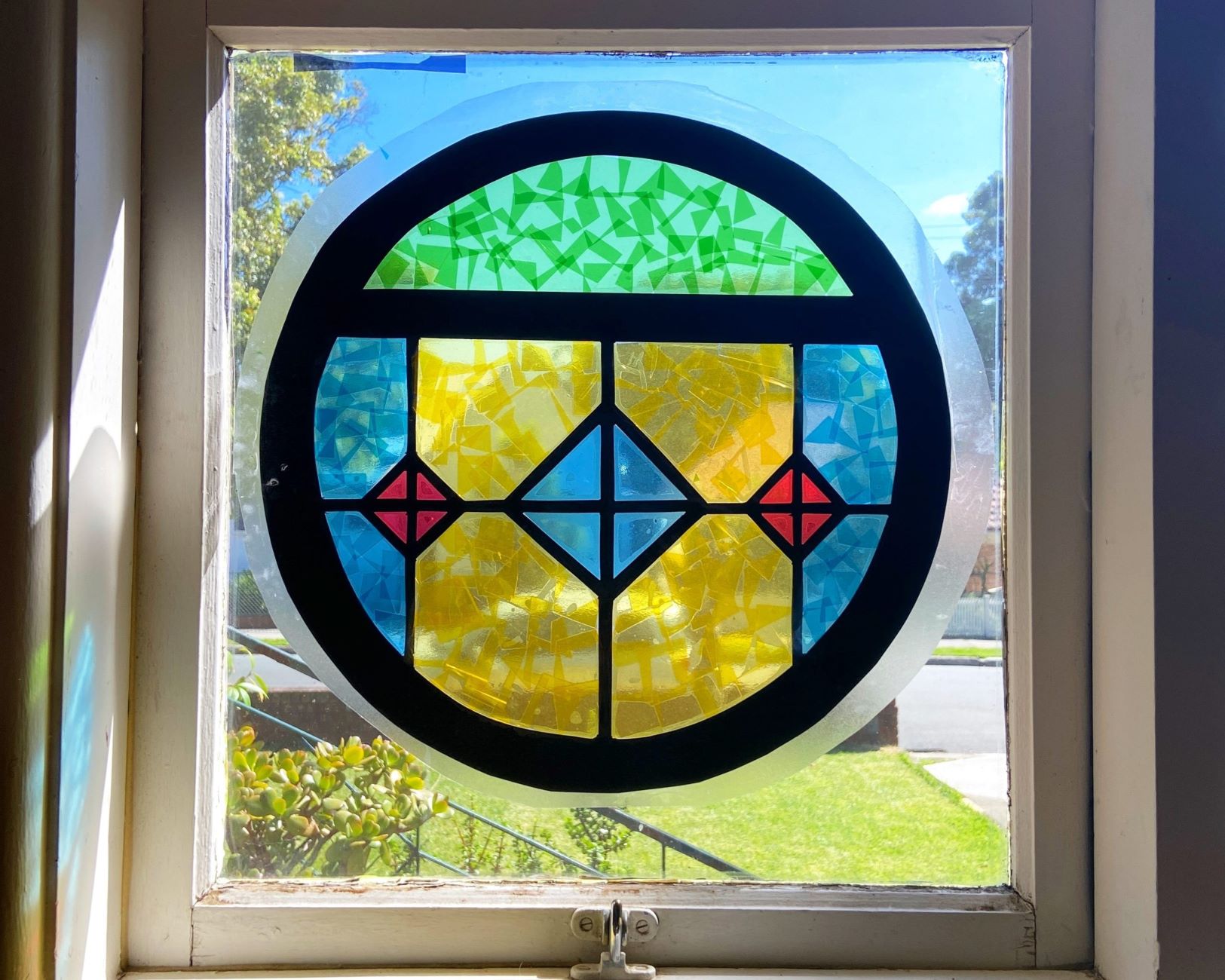
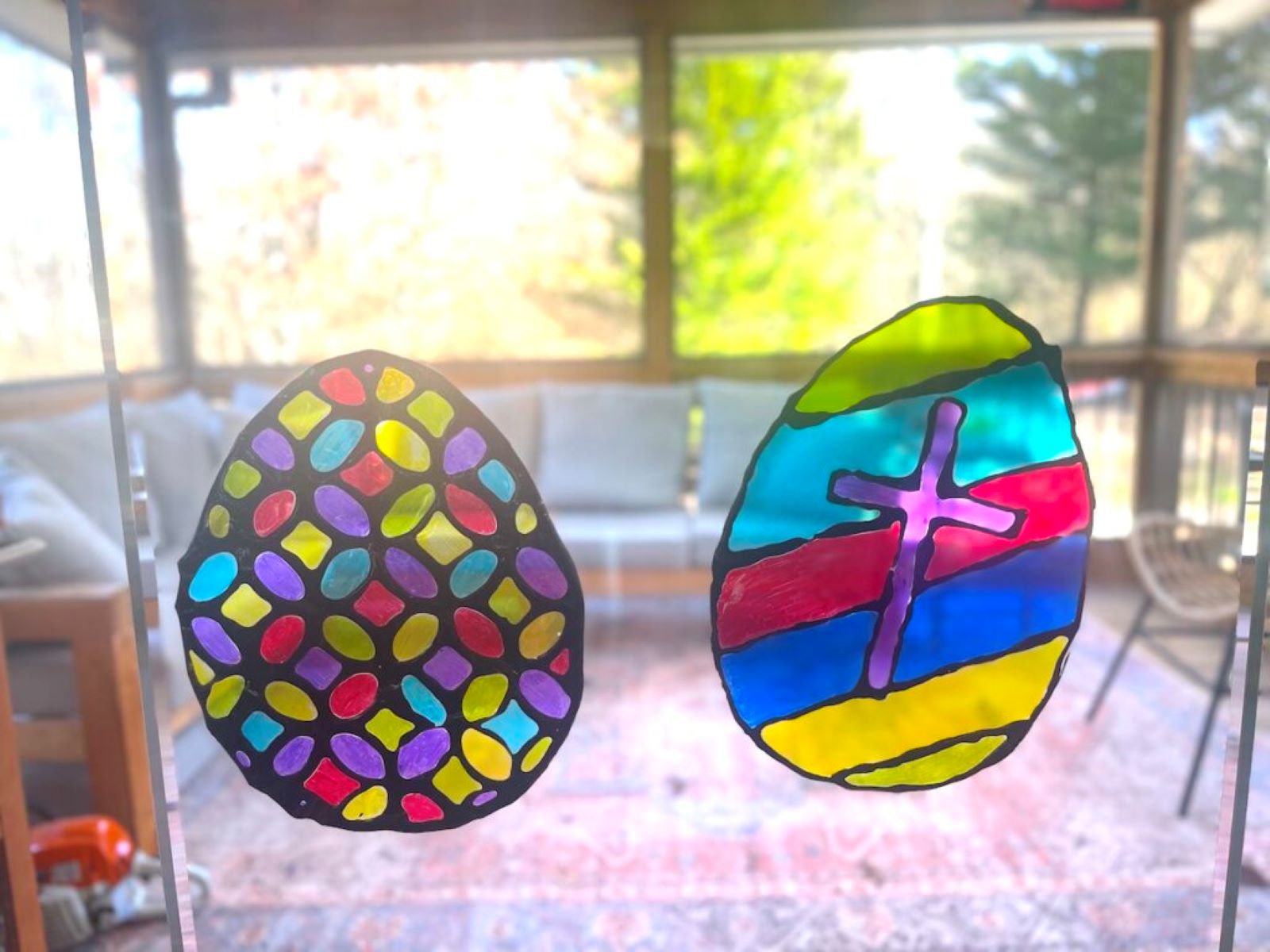
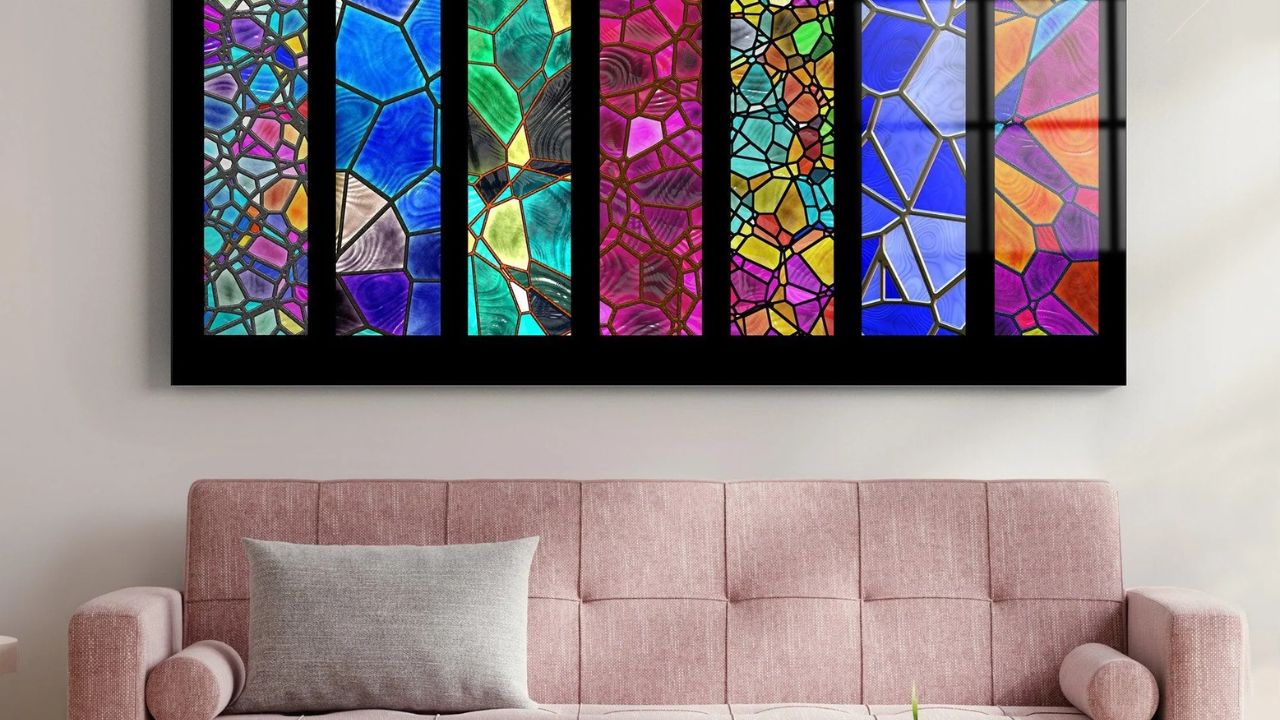
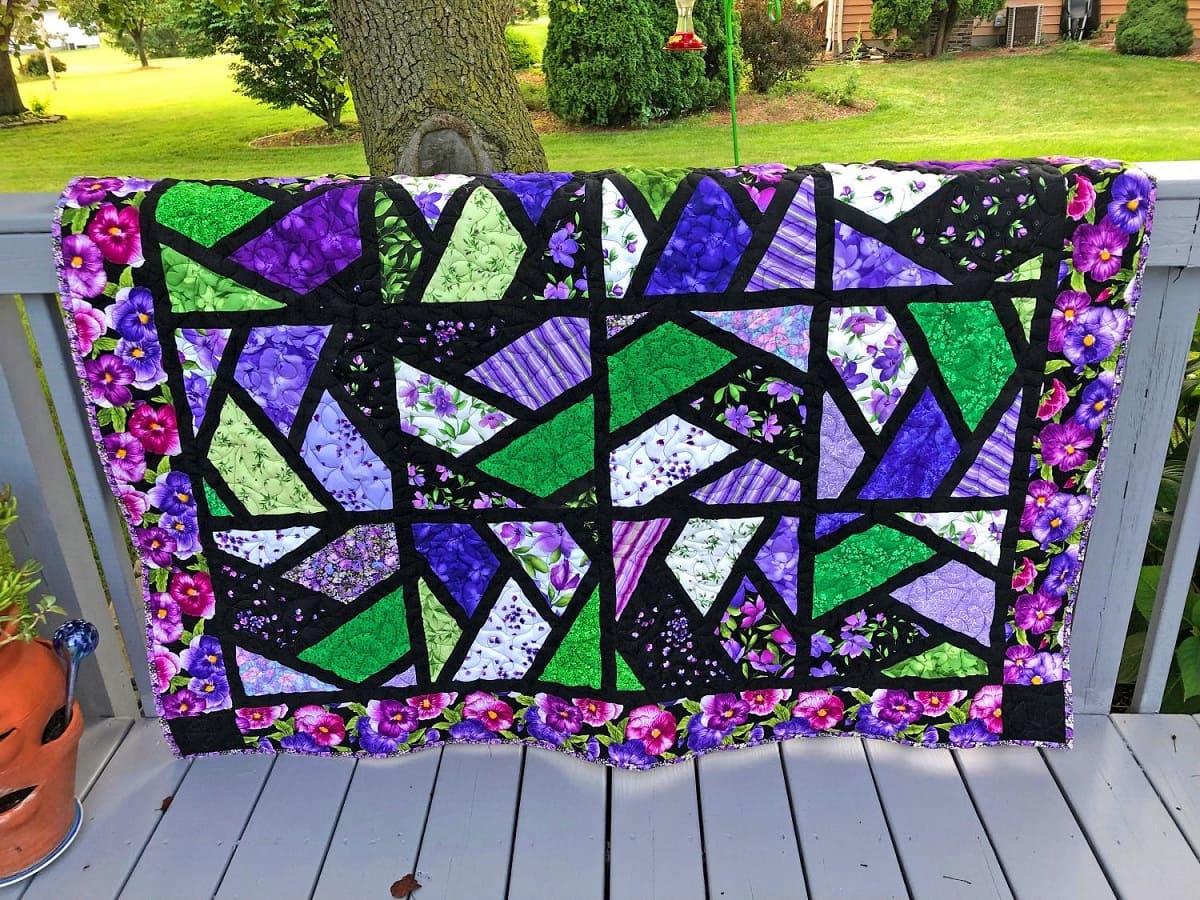
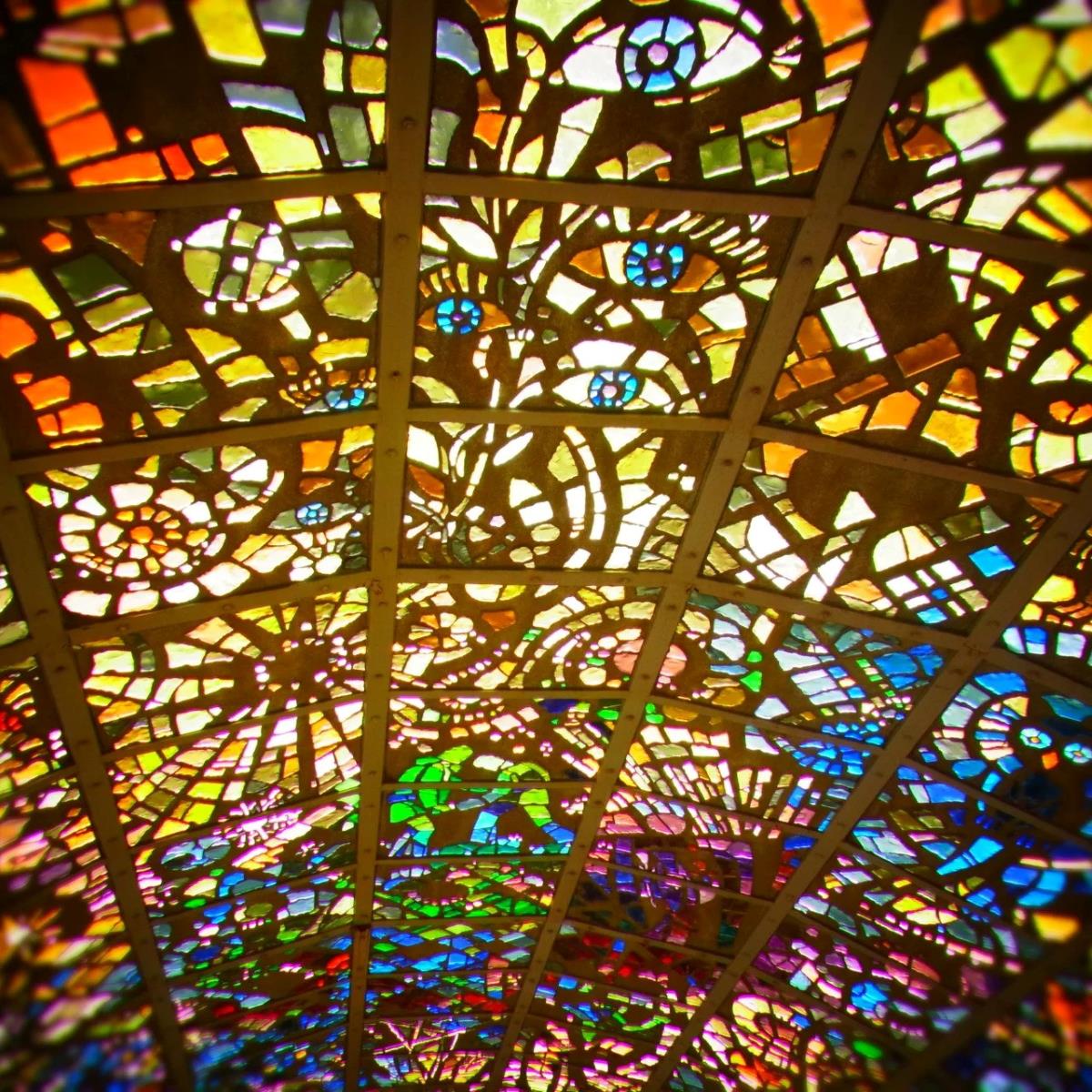


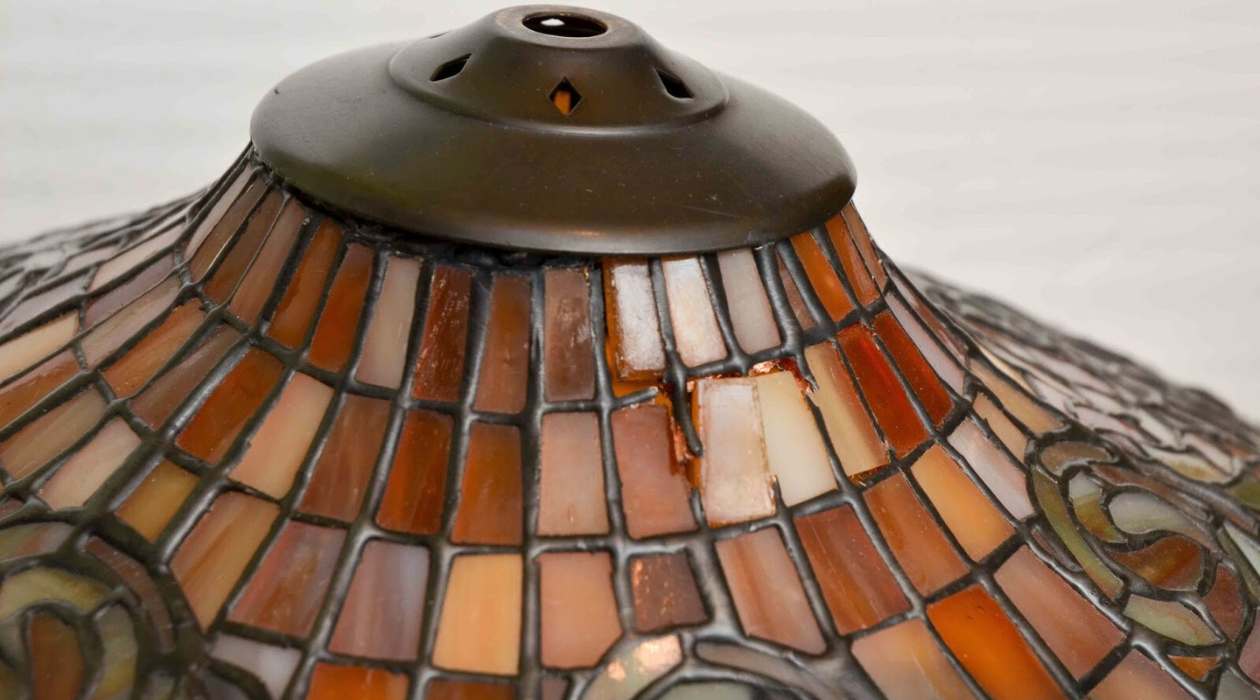
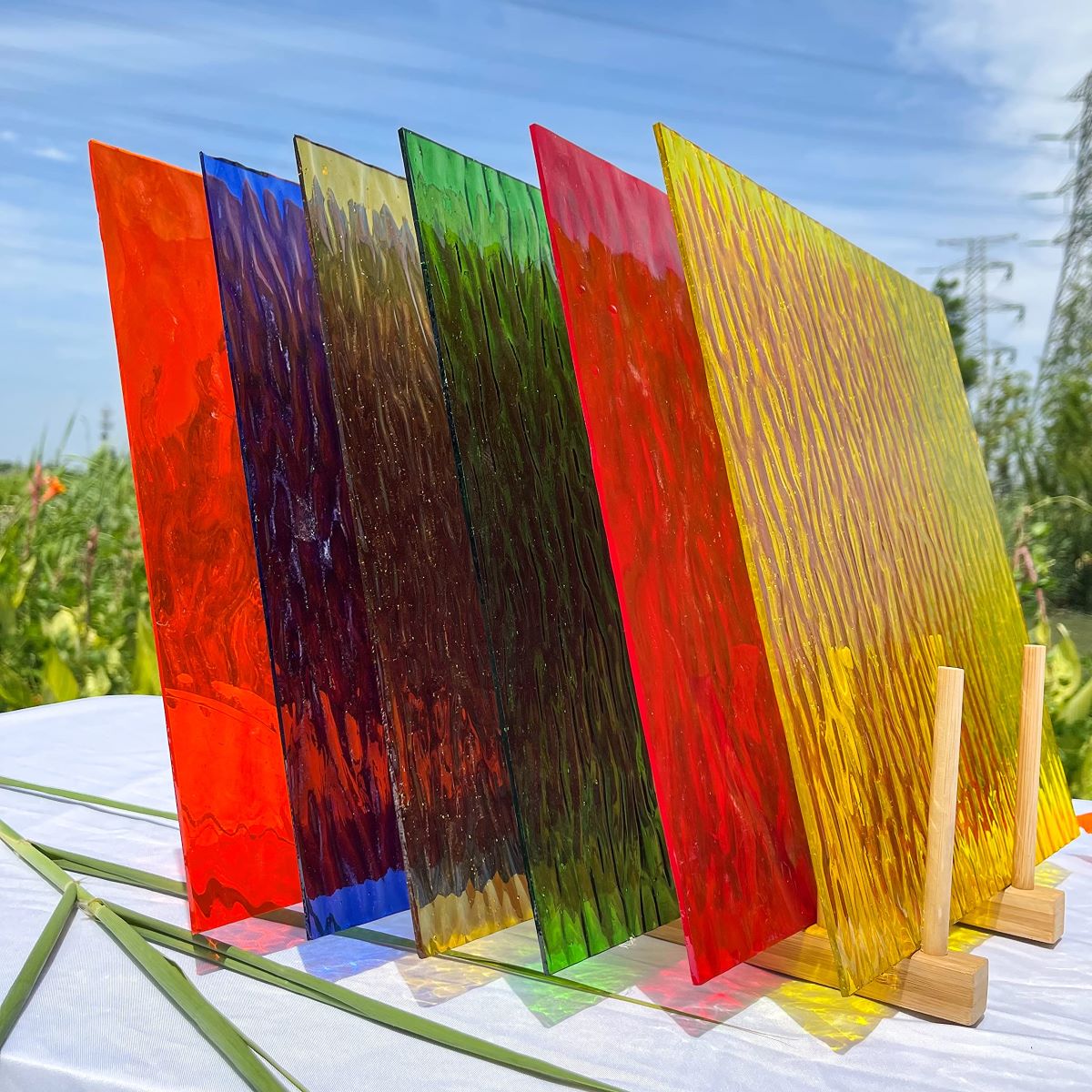

0 thoughts on “How To Learn Stained Glass”